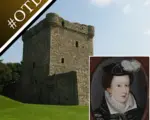
On this day in Tudor history, 2nd May, Queen Anne Boleyn and her brother, Lord Rochford, were arrested; Anabaptist Joan Bocher was burnt in Edward VI’s reign; and Mary, Queen of Scots escaped from Lochleven Castle…
[Read More...]
On this day in Tudor history, 2nd May, Queen Anne Boleyn and her brother, Lord Rochford, were arrested; Anabaptist Joan Bocher was burnt in Edward VI’s reign; and Mary, Queen of Scots escaped from Lochleven Castle…
[Read More...]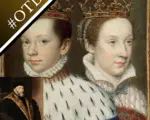
On this day in Tudor history, 24th April, Lord Chancellor Thomas Audley set up some of the legal machinery used in the fall of Anne Boleyn; Mary, Queen of Scots married Francis, the Dauphin, at Notre Dame; and it was the night for divining who you were going to marry…
[Read More...]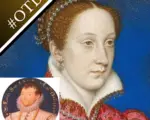
On this day in Tudor history, 19th April, Mary, Queen of Scots got betrothed to the Dauphin; Sir Francis Drake “singed the King of Spain’s beard”; and a Catholic bookseller was hanged at Tyburn…
[Read More...]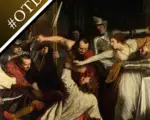
On this day in Tudor history, 9th March, Mary, Queen of Scots’ private secretary was assassinated in front of the pregnant queen, Mary’s mother-in-law, Margaret Douglas, Countess of Lennox, died, and Lady Frances Radcliffe, one of Elizabeth I’s ladies of the bedchamber, died…
[Read More...]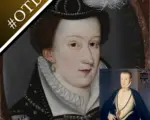
On this day in Tudor history, 17th February, Edward Seymour, King Edward VI’s uncle, was made Duke of Somerset, Mary, Queen of Scots, met and fell in love with Henry Stuart, Lord Darnley, and Henry Radcliffe, 2nd Earl of Essex, died…
[Read More...]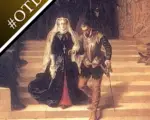
On this day in Tudor history, 8th February, Mary, Queen of Scots was executed in a rather botched beheading, and Elizabeth I’s favourite, Robert Devereux, 2nd Earl of Essex, launched a rebellion, which did not go well…
[Read More...]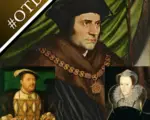
On this day in Tudor history, 7th February, Sir Thomas More, Henry VIII’s famous Lord Chancellor, was born, Mary, Queen of Scots was informed she’d be executed the next day, and Henry VIII took part in the Shrovetide joust with the motto “Declare I dare not”…
[Read More...]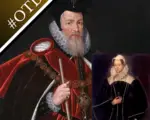
On this day in Tudor history, 3rd February, Edward Stafford, 3rd Duke of Buckingham, was born, Silken Thomas was executed, and Elizabeth I’s privy council met and agreed to send Mary, Queen of Scot’s death warrant to Fotheringhay without Elizabeth’s knowledge…
[Read More...]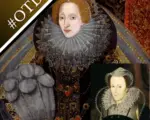
On this day in Tudor history, 1st February, earldoms were granted by Henry VIII, including to his friend Charles Brandon; an alchemist was born; Mary I gave a rousing speech to the citizens of London, and Elizabeth I signed the warrant for the execution of Mary, Queen of Scots…
[Read More...]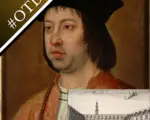
On this day in Tudor history, 23rd January, King Ferdinand II of Aragon died, the half-brother of Mary, Queen of Scots, was assassinated, and Elizabeth I opened the Royal Exchange in London…
[Read More...]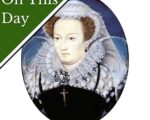
On this day in Tudor history, 25th September 1586, in the reign of Queen Elizabeth I, Mary, Queen of Scots, was moved to Fotheringhay Castle in Northamptonshire, and Elizabeth finally backed down and agreed to the appointing of 36 commissioners to act as judges in her trial. Mary would never leave the castle.
[Read More...]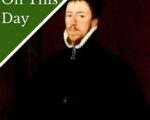
On this day in Tudor history, 7th September 1571, Thomas Howard, 4th Duke of Norfolk, was arrested for his part in the Ridolfi Plot.
This plot aimed to assassinate the Protestant Queen Elizabeth I and replace her with Catholic Mary, Queen of Scots.
Norfolk confessed to corresponding with Mary’s supporters and was taken to the Tower of London. He was executed on 2nd June 1572 after being found guilty of high treason.
[Read More...]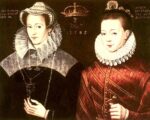
On this day in Tudor history, 19th June 1566, Mary, Queen of Scots gave birth to a son at Edinburgh Castle. He was her only son and he was fathered by her second husband, Henry Stewart, Lord Darnley.
The little boy was baptised Charles James in a Catholic service on 17th December 1566 at Stirling Castle. The name Charles was in honour of his godfather, Charles IX of France, Mary’s former brother-in-law, but he was known as James, after his grandfather, James V, and the other Stewart kings.
[Read More...]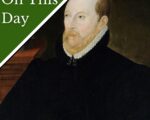
On this day in Tudor history, 14th May 1571, Matthew Stewart, Earl of Lennox and regent to the young King James VI of Scotland, held the “Creeping Parliament” in Edinburgh.
It was called the Creeping parliament because members had to crawl on their hands and knees into the Canongate to avoid being shot by the supporters of the abdicated Mary, Queen of Scots, who held Edinburgh Castle.
[Read More...]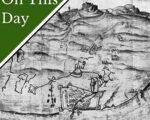
On this day in Tudor history, 7th May 1560, in the reign of Elizabeth I, English troops charged the wall of Leith at the siege of Leith.
In 1548, during the War of the Rough Wooing, which had broken out over Scotland’s refusal to marry Mary Queen of Scots off to Edward VI, Scotland had invited French troops to protect the port of Leith. They set up a garrison and were still there 12 years later. Protestant reformers turned to England to help them remove these French Catholics.
[Read More...]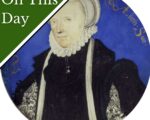
On this day in Tudor history, 19th February 1567, in the reign of Queen Elizabeth I, Margaret Douglas, Countess of Lennox, was informed of the murder of her son, Henry Stewart, Lord Darnley.
Darnley had been murdered nine days earlier at Kirk o’ Field, Edinburgh, in the Royal Mile, just a few hundred yards from Holyrood House where his wife, Mary Queen of Scots, and baby son, the future James VI/I, were staying.
[Read More...]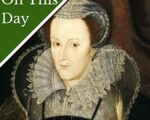
On this day in Tudor history, 7th February 1587, the warrant for the execution of Mary, Queen of Scots, arrived at Fotheringhay Castle in Northamptonshire, where Mary was being held.
Mary had been tried for treason in October 1586 after being implicated in the Babington Plot, a plot to depose Queen Elizabeth I and to replace her with Mary. She had been found guilty and sentenced to death, but Elizabeth would not sign the execution warrant, not wanting the responsibility of killing an anointed queen. However, Mary’s gaoler, Sir Amias Paulet, would not agree to quietly doing away with Mary, and after pressure from her council and petitions from Parliament, Elizabeth finally signed the warrant, although she later said she had asked for it not to be sent to Fotheringhay yet.
[Read More...]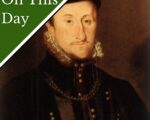
On this day in Tudor history, 23rd January 1570, James Stewart, 1st Earl of Moray, illegitimate son of James V, half-brother of Mary, Queen of Scots, and a man who was acting as regent for his half-nephew, King James VI, was assassinated.
Moray, who was about 38 or 39 years of age at his death, had become regent for his one-year-old half-nephew following the abdication of Mary, Queen of Scots. Mary, who was imprisoned at the time, had been forced to abdicate by the confederate lords following her defeat at Carberry Hill.
[Read More...]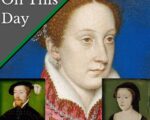
On this day in Tudor history, 8th December 1542, Marie de Guise, second wife of King James V of Scotland, gave birth to a healthy baby girl at Linlithgow Palace in Scotland. The little girl was baptised Mary and when she was just six days old, she became Queen of Scotland and is known as Mary Stuart (Stewart) or Mary, Queen of Scots.
Find out about the life of Mary, Queen of Scots, including her three marriages, abdication, imprisonment and downfall…
[Read More...]
As today is the anniversary of Elizabeth I agreeing to sentence Mary, Queen of Scots, to death, I thought I’d share this video recorded by Emma Casson, who was 19 at the time, and who was studying journalism in the Netherlands. Emma shows us some of the parts of Edinburgh that Mary would have known.
[Read More...]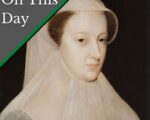
On this day in Tudor history, 28th November 1565, Francis Yaxley set sail for Scotland from Antwerp.
The member of Parliament and political agent was carrying gold to Scotland for Mary, Queen of Scots. However, his ship was wrecked in a storm and he never reached Scotland, and neither did the gold.
But why was Francis Yaxley carrying gold? Who was it from and what happened to it?
[Read More...]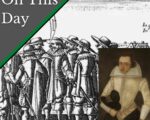
On this day in Tudor history, 20th September 1586, in the reign of Queen Elizabeth I, conspirators Anthony Babington, John Ballard, John Savage, Chidiock Tichborne, and three others, were executed near St Giles-in-the-Fields in London.
They were hanged, drawn and quartered after being found guilty of treason for the Babington Plot, which sought to assassinate Elizabeth I and replace her with Mary, Queen of Scots.
Find out more about Anthony Babington, the Babington Plot, the men involved, how it was discovered, and how it led to Mary, Queen of Scots’ execution…
[Read More...]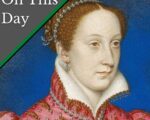
On this day in Tudor history, 11th September 1561, Mary, Queen of Scots, set off on her first royal progress in Scotland.
Eighteen-year-old Mary had been in Scotland for less than a month, having returned from France following her husband Francis II’s death. Now, she wanted to see her homeland and her people, and show the people their queen.
This royal progress was to be an eventful one. It included a brush with death and a violent altercation!
Let me tell you more…
[Read More...]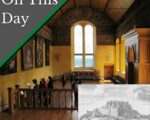
On this day in Tudor history, 9th September 1543, nine-month-old Mary, Queen of Scots, was crowned queen at the Chapel Royal of Stirling Castle.
It was the 30th anniversary of the Battle of Flodden and the death of Mary’s grandfather, King James IV of Scotland.
Find out more about how Mary came to the throne, her coronation ceremony, in which Mary howled, and how she was already promised in marriage to Henry VIII’s son, the future Edward VI…
[Read More...]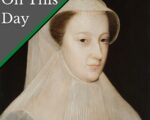
On this day in Tudor history, 19th August 1561, Mary, Queen of Scots returned to her homeland, Scotland, from France. Her husband, King Francis II of France, had died in December 1560.
Let me explain the context of her return to Scotland, which would, of course, be the start of her troubles.
[Read More...]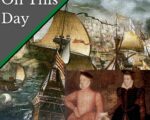
On this day in Tudor history, Sunday 29th July 1565, twenty-three-year-old Mary, Queen of Scots, queen regnant of Scotland, married her second husband, nineteen-year-old Henry Stuart, Lord Darnley, at Holyrood Palace.
I give details of their wedding and how the couple’s marital bliss was rather short-lived…
[Read More...]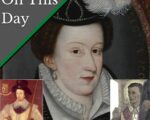
On this day in Tudor history, 24th July 1553, in the reign of Queen Mary I, merchant and conspirator Richard Hesketh was born in Lancashire.
Hesketh is known for the Hesketh Plot of 1593, when he urged Ferdinando Stanley, 5th Earl of Derby, to lead a rebellion to claim the throne of England.
But who was Richard Hesketh and why did he plot against Queen Elizabeth I?
What happened to him and what happened to Ferdinando Stanley?
And why did Stanley take bezoar stone and unicorn horn?
[Read More...]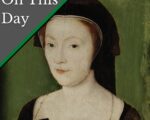
On this day in Tudor history, 23rd July 1543, or 24th according to some sources, Marie de Guise and her baby daughter, Mary, Queen of Scots, escaped from Linlithgow Palace.
They were helped by Cardinal David Beaton, who took them to Stirling Castle.
[Read More...]
On this day in Tudor history, 20th June 1567, a silver casket of eight letters were allegedly found in the possession of James Hepburn, Earl of Bothwell, the third husband of Mary, Queen of Scots.
These letters, which became known as the Casket Letters, were instrumental in bringing down Mary, Queen of Scots.
Let me tell you a bit more about the Casket Letters and why they were “dynamite” for Elizabeth I’s advisors.
[Read More...]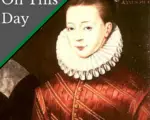
On this day in Tudor history, on 19th June 1566, in Scotland, Mary, Queen of Scots gave birth to a baby boy who would grow up to be King James VI of Scotland and King James I of England. He was baptised Charles James though.
[Read More...]